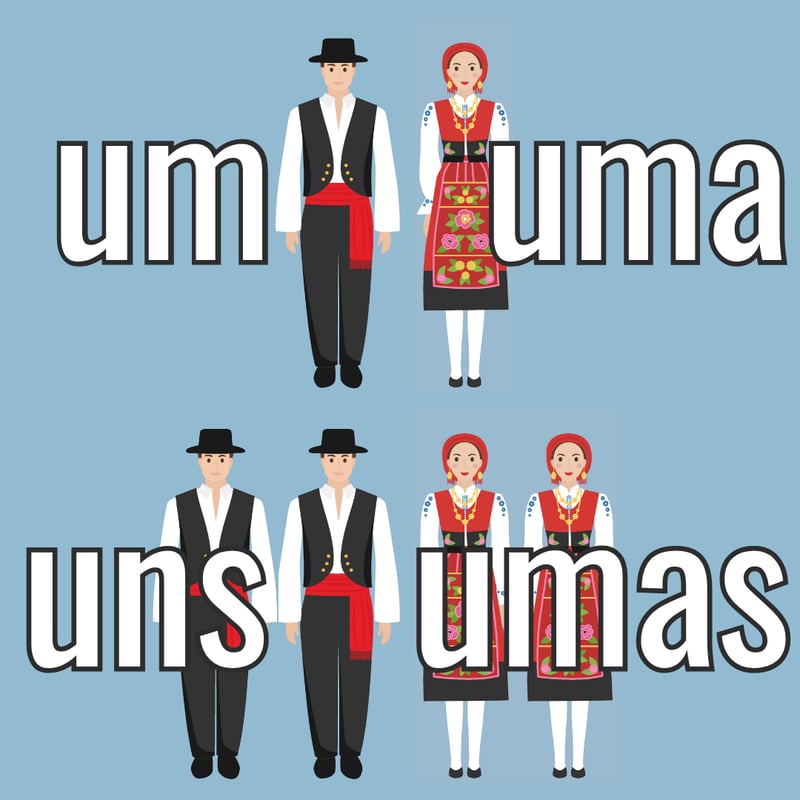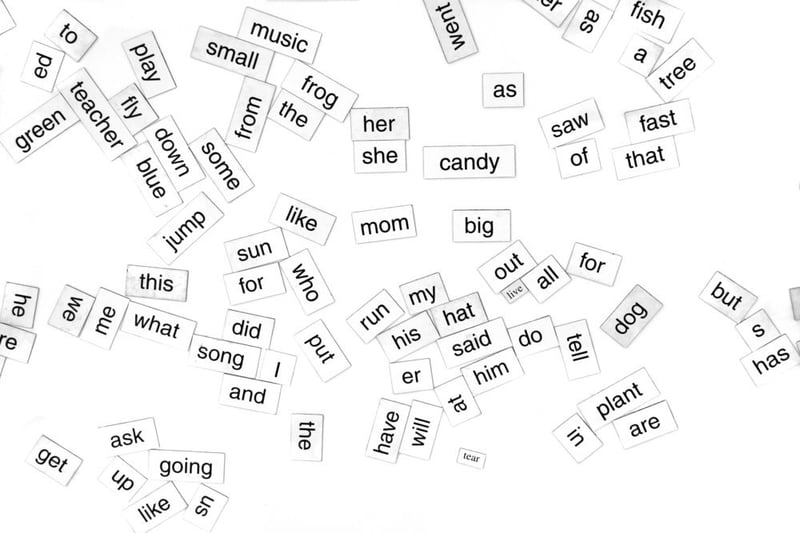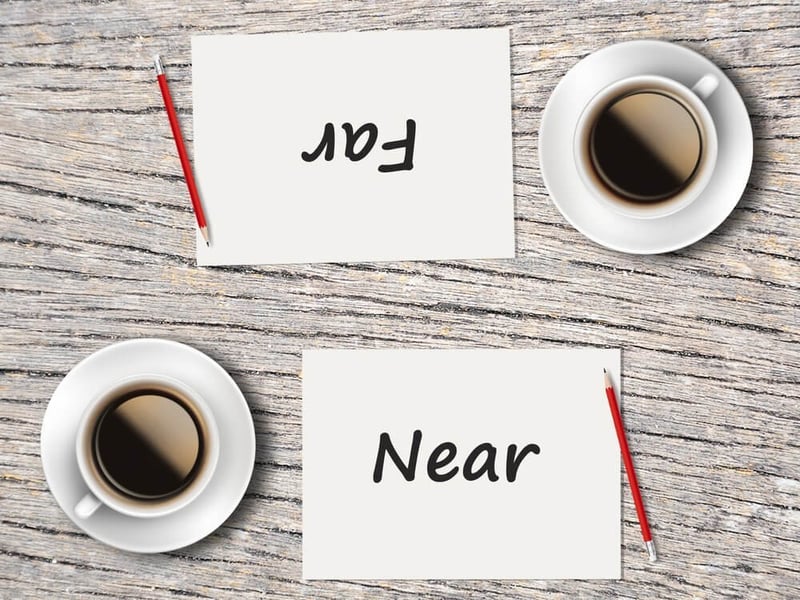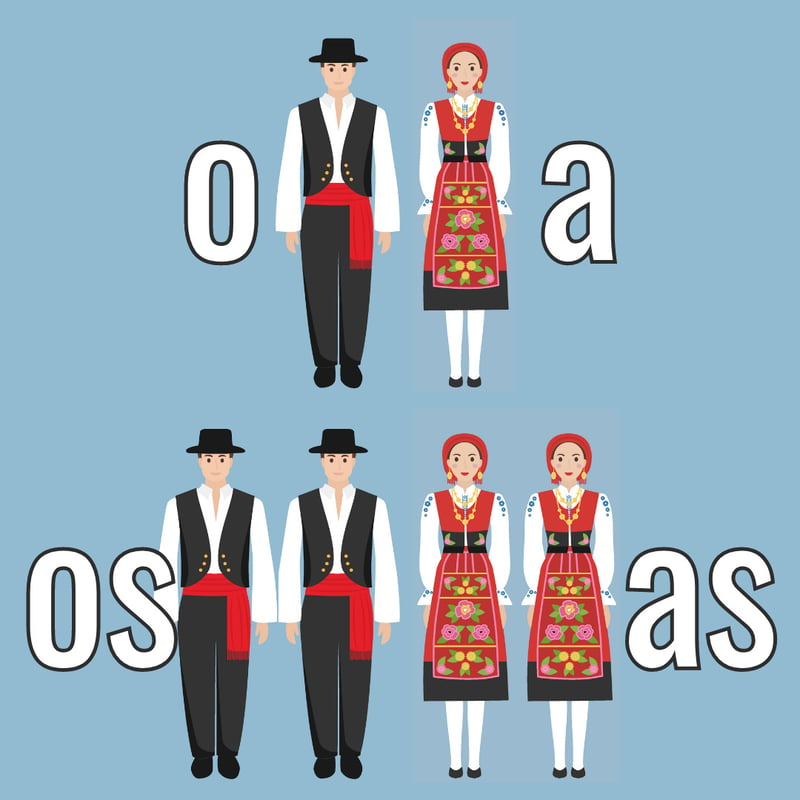In the Numbers 1 unit, we gave you an overview of many different types of numbers, and we practiced with just 0-19. Now it’s time to pick up where we left off, so we can start using higher numbers. The lessons in this unit will focus on Portuguese numbers in the tens, hundreds, and thousands.
Forming Portuguese Numbers in the Tens, Hundreds, and Thousands
Family Members in Portuguese
In this Learning Note, we’ll present a lot of Portuguese vocabulary related to different family members and loved ones. Then you can practice using these new words in the Lessons that follow. You may wish to add some of these words to your Smart Review, depending on which members of you like to talk about […]
O Feminino e o Masculino
Feminine and Masculine
Explore the basics of using gender in Portuguese. Listen for the feminine and masculine words within these back to back introductions. The meaning of each introduction is the same, except for one important difference: the first is spoken by a female and the second is spoken by a male. Notice how the words used are […]
Colours in Portuguese
Let’s explore some useful vocabulary: colours in Portuguese! Even if you’re not an artist, it helps to know . How else will you talk about all the beautiful tiles and buildings around you in Portugal? Plus, next time you’re shopping, you’ll have an easier time asking for what you need. You can even use colours […]
The Gender of Portuguese Words
Unlike English, most Portuguese words have a gender: ♂ masculine or ♀ feminine. Sometimes you’ll notice patterns, such as the -o ending in many masculine words and the -a ending in many feminine words. There are many, many exceptions, however, so you can’t always rely on that rule. You can start by using the patterns […]
Indefinite Articles in Portuguese
How to Say A, An, & Some In Portuguese We just learned how to say “the car” using definite articles, but what if you want to talk about “a car” in general? This is called an , because we’re talking about an undefined car, rather than a specific instance of a car. In English, we […]
Cardinal Numbers
What are cardinal numbers? Cardinal numbers are basically regular ol’ numbers. They simply indicate the number of people, animals, or things. They are invariable, except… The majority of cardinal numbers are invariable, meaning they only have one form. For example, you say três meninos (3 boys) and três meninas (3 girls). There is only one […]
Existential Quantifiers: Many, Few, Some
In this lesson, we’ll learn about . Existential quantifiers provide information about quantity without specifying an exact quantity or amount. In English, we would use words like many, few, some, so much, another, several, and plenty. Let’s take a look at how to express these concepts in Portuguese. Muito, Muita, Muitos, Muitas Muito and muita are […]
Universal Quantifiers: All or None
In this lesson, we’ll learn about . Universal quantifiers are quantifiers that apply to every element of a given group. In English, this would include words like all, none, any, both, and every. Let’s learn about each of the words used to express these concepts in Portuguese. Todo, Toda, Todos, Todas Todo and toda are the singular […]
Interrogative Quantifiers: How Much? How Many?
In this lesson, we’ll take a look at . Interrogative quantifiers introduce questions related to quantities. These types of questions are invariably answered using another quantifier. The interrogative quantifiers include: How much? When used to question a quantity, quanto and quanta are the singular form equivalents to “how much” in English. (In an upcoming lesson, […]
Relative Quantifiers: As Much As
In this lesson, we’ll learn about . Relative quantifiers don’t specify an exact quantity, but instead tell us about how a quantity compares in relation to an unspecified whole. As expected, the determiner used matches the gender and number of the item(s) it refers to. Quanto, Quanta, Quantos, Quantas Quanto and quanta are used in […]
Definite and Indefinite Articles
In this lesson, we’ll compare Portuguese definite articles and indefinite articles. are small words that precede and define a noun. In Portuguese, articles take on different forms to agree in gender and number with the noun they define. In English, we just have the definite article the and the indefinite articles a, an, and some. […]
Simple and Compound Adjectives
Adjectives are words that describe or qualify nouns. They can be if they’re just one word, or if formed by two or more elements, usually (but not always) connected by a hyphen (-). Simple Portuguese Adjectives Compound Portuguese Adjectives More compound adjectives:
Talking about Quantity
These are three of the simplest, most common words used to talk about quantity in Portuguese: Countable Nouns When talking about countable quantities (which usually end in “-s” in English as well as Portuguese), muito, pouco and algum all change according to gender and number: Uncountable Nouns With uncountable nouns (such as virtues, qualities, or time, […]
Introduction to Portuguese Adjectives
are words that describe a noun, assigning it a quality, state, appearance, or other property. (Adverbs are also used to describe, but instead of nouns, they modify verbs, adjectives, and other adverbs.) In Portuguese, using adjectives requires that you consider the gender and number of the word being modified, as well as the word order […]
Introduction to Possessives
Possessive Determiners vs. Possessive Pronouns In this unit, we’re going to learn about possessive determiners and possessive pronouns in European Portuguese, which both serve the function of expressing possession or ownership of something. In English, these are words like my, your, his, her, their, and our (possessive determiners) and mine, yours, his, hers, theirs, and […]
Combining "Em" with Demonstratives
The preposition can be combined with variable and invariable demonstratives to form a number of very useful contractions. Remember that all the same rules for demonstratives remain valid when they appear in the following contractions. Em + Variable Demonstratives Relative Position Demonstrative Contraction Near the speaker: Near the listener: Away from both: These contractions can be used […]
Combining "De" with Demonstratives
You learned in The Preposition “De” (from the first Prepositions unit) that de has several different meanings and can be joined together (contracted) with: articles (do, da, dos, das), and pronouns (dele, dela, deles, delas) De + Variable Demonstratives Another very common combination is with demonstratives. Let’s look at the contractions formed by combining with variable demonstratives: […]
Variable Demonstratives
As we mentioned, when you say this, that, these, or those in Portuguese, you have to be a little more specific… Variable demonstratives are used to indicate all of the following at once: a person or object’s gender the number (one or more) the position in space or time The gender and number part is […]
Definite Articles in Portuguese
A is basically a person, place, or thing. When we think of nouns, we tend to think of vocabulary words. But before we go adding a bunch of Portuguese words to your vocabulary, we have to get some boring really fun stuff out of the way first… Gender & Number In Portuguese, almost every noun […]





 Eliana
Eliana Rui
Rui















